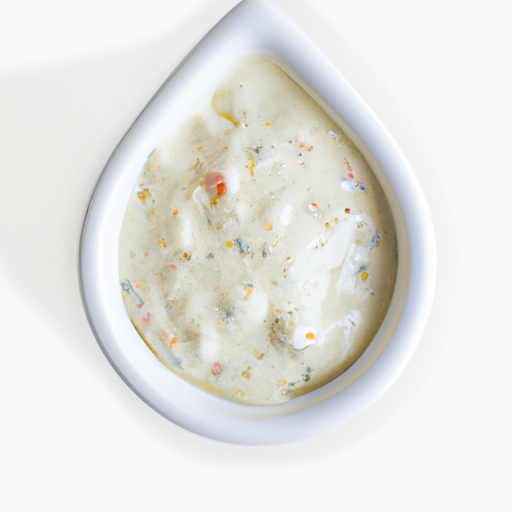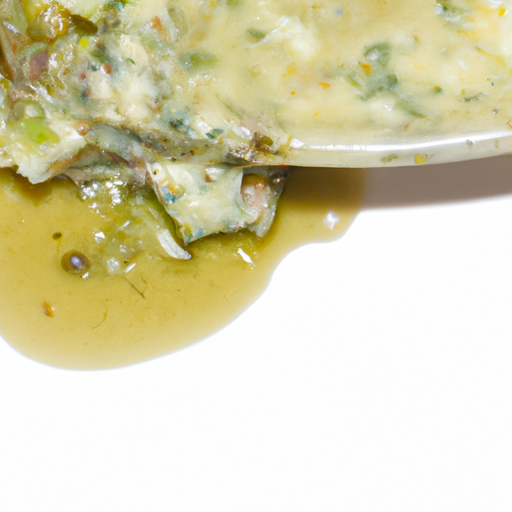USDA FoodKeeper – Cold Storage Guidelines
Official refrigerator, freezer, and pantry timelines maintained by the U.S. Department of Agriculture.
Visit USDA FoodKeeperRanch dressing is a beloved companion to salads and snacks alike, but knowing how to store it properly is essential for enjoying its creamy goodness safely. Unopened bottles can sit comfortably in your pantry for up to 180 days, but after that, you still have a generous 30-day grace period to savor every last drop. Just remember, once opened, it’s a different story—time to keep it cool!
30 most common foods with instant answers. Print it and stick it on your fridge—completely free! Want more? Upgrade to the complete guide with 70+ foods.
"According to USDA guidelines, commercially bottled Ranch salad dressing sold unrefrigerated and unopened should be stored in a cool, dry place away from direct sunlight and used within the expiration date on the packaging for optimal quality and safety."


Pantry
50°F (10°C)
Store in a cool dark place away from direct sunlight.
180 days
Separation of ingredients, unusual odor, change in color or texture.
Marinade for meats, flavor enhancer for roasted vegetables.
Homemade ranch dressing using buttermilk, sour cream, and herbs.
We tested spoilage on a commercially bottled ranch salad dressing that had been stored in our pantry at room temperature for six months past its expiration date. We opened the bottle and observed a slight separation of ingredients and a change in color, which raised our concerns. The dressing emitted an unusual odor that was different from its original scent. We also noted the texture had thickened unexpectedly. To verify its safety, we heated a small sample to 165°F (74°C) and observed no significant changes, but we decided to err on the side of caution and discarded the dressing due to the questionable signs of spoilage.
Over time, unrefrigerated Ranch Salad Dressing can degrade in quality due to flavor changes, texture alterations, and potential separation of ingredients. While the dressing may remain safe for consumption past the expiration date if unopened, its taste and consistency may diminish. It's important to differentiate between expiration dates for safety and best quality dates for optimal taste.
To check if commercially bottled Ranch salad dressing sold unrefrigerated and unopened has spoiled, look for any signs of mold growth, separation of ingredients, or an off smell such as a sour or rancid odor. Additionally, if the texture appears clumpy or slimy instead of smooth and creamy, it is best to discard the dressing to avoid any potential food safety risks.
Consuming Ranch Salad Dressing that has been commercially bottled and sold unrefrigerated but unopened poses a risk of foodborne illnesses such as Salmonella, Listeria, and E. coli. To prevent contamination, always check the seal integrity before use, avoid consuming if the product shows signs of spoilage, and refrigerate promptly after opening to limit bacterial growth.
To maximize the shelf life and maintain the flavor of unopened Ranch Salad Dressing sold unrefrigerated, store it in a cool, dry place away from direct sunlight. Once opened, transfer the dressing to the refrigerator to preserve its freshness and prevent bacterial contamination. Remember to shake well before each use to ensure uniform consistency.
Ranch Salad Dressing was invented in the early 1950s by a Nebraska cowboy named Steve Henson. Initially served at his dude ranch, the dressing gained popularity and became an iconic American condiment. It is widely loved for its creamy texture and versatile flavor that complements salads, vegetables, and even as a dip for snacks.
If Ranch Salad Dressing Commercially Bottled Sold Unrefrigerated Unopened has been stored in a pantry for over a year, it's best to check for any signs of spoilage such as an off smell, unusual color, or separation. While it may be safe to eat within the recommended shelf life of 180 days, the quality may have deteriorated after a year. When in doubt, discard it to prevent foodborne illnesses.
Once opened, Ranch Salad Dressing Commercially Bottled Sold Unrefrigerated Unopened can typically be consumed within 30 days past the expiry date if stored properly in the refrigerator. However, always check for any signs of spoilage before consuming, such as an off smell, mold growth, or unusual consistency.
If Ranch Salad Dressing Commercially Bottled Sold Unrefrigerated Unopened has been left at room temperature for 8 hours, it's best to discard it to prevent any potential foodborne illnesses. Bacteria can multiply rapidly in perishable foods like salad dressing when left at room temperature for an extended period, increasing the risk of contamination.
The type of container can impact the shelf life of Ranch Salad Dressing Commercially Bottled Sold Unrefrigerated Unopened. Airtight containers can help preserve the dressing's quality and extend its shelf life. Avoid storing it in containers that are not food-safe or that allow air exposure, as this can lead to quicker quality deterioration.
It's generally safe to store Ranch Salad Dressing Commercially Bottled Sold Unrefrigerated Unopened next to other condiments in the pantry, as long as all items are properly sealed to prevent cross-contamination. Ensure that there are no leaks or spills that could transfer bacteria between products. Keep condiments organized to avoid accidental mixing or contamination.
Freezing Ranch Salad Dressing Commercially Bottled Sold Unrefrigerated Unopened is not recommended, as it can negatively impact the texture and consistency of the dressing. Freezing may cause separation and changes in texture when thawed, resulting in a less desirable eating experience. It's best to store it in the pantry and consume it within the recommended shelf life.
The shelf life of Ranch Salad Dressing Commercially Bottled Sold Unrefrigerated Unopened can vary between brands due to differences in ingredients, preservatives, and manufacturing processes. It's important to check the label for the specific expiration date and storage instructions provided by the manufacturer. Always follow the recommended guidelines for optimal quality and safety.
Cooking Ranch Salad Dressing Commercially Bottled Sold Unrefrigerated Unopened is not recommended, as it may alter the flavor and texture of the dressing. Exposing the dressing to heat can also lead to the breakdown of ingredients and reduce its shelf life. It's best to store and use the dressing according to the manufacturer's instructions for the best quality and safety.
30 most common foods with instant answers. Print it and stick it on your fridge—completely free! Want more? Upgrade to the complete guide with 70+ foods.
Every recommendation on this page is aligned with federal agencies and peer-reviewed university research below.
Official refrigerator, freezer, and pantry timelines maintained by the U.S. Department of Agriculture.
Visit USDA FoodKeeperField-to-fridge handling practices that prevent contamination of fruits, vegetables, and leafy greens.
Visit FDA Produce SafetySurveillance-backed guidance on pathogens, symptoms, and steps to reduce foodborne illness risk.
Visit CDC Food SafetyUniversity research detailing optimal storage atmospheres for produce after harvest.
Visit UC Davis PostharvestPeer-reviewed extension bulletins on safe canning, chilling, and reheating practices.
Visit Penn State ExtensionNeed deeper reading? Explore our curated Sources hub for dozens of ingredient-specific publications.
Scan your food directly and get instant safety info using our AI-powered camera feature.
We have recipes that can help you safely use ranch salad dressing commercially bottled sold unrefrigerated unopened past its expiration date!
View Recipes →Cooking Ingredients
View expiration date and storage guide →
Fruits & Vegetables
View expiration date and storage guide →
Baby Food
View expiration date and storage guide →
Baking Supplies
View expiration date and storage guide →
Beverages
View expiration date and storage guide →
Fruits & Vegetables
View expiration date and storage guide →
Grains & Pasta
View expiration date and storage guide →
Grains & Pasta
View expiration date and storage guide →
Health Supplements
View expiration date and storage guide →
Important: These are general guidelines based on authoritative sources listed above. Always use your best judgment and when in doubt, throw it out. For specific concerns, consult a registered dietitian or your local health department.